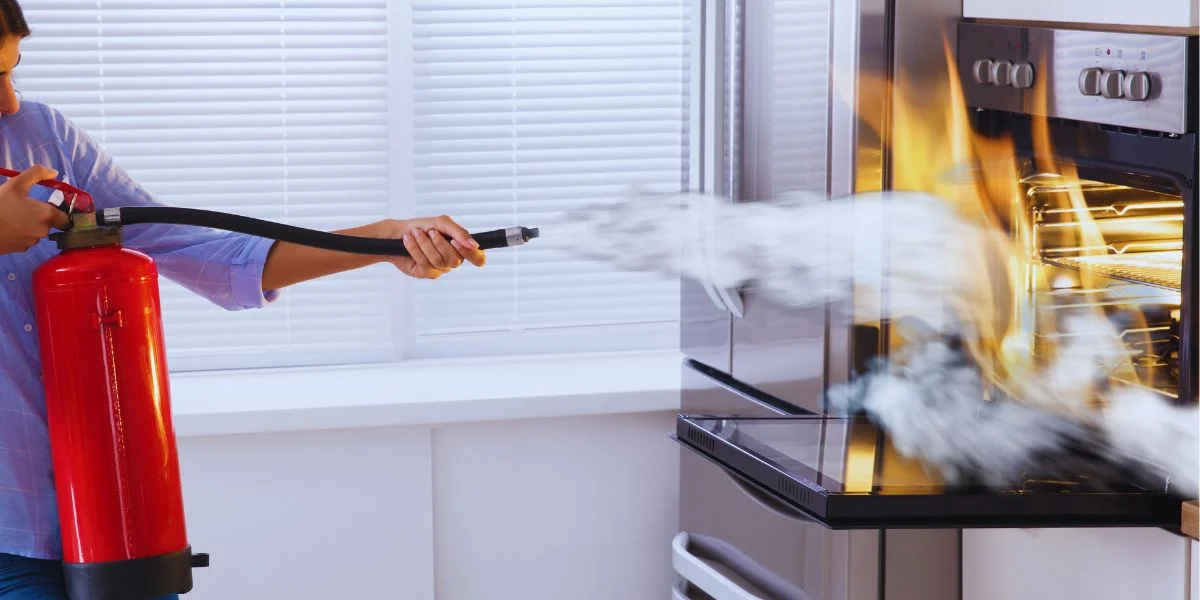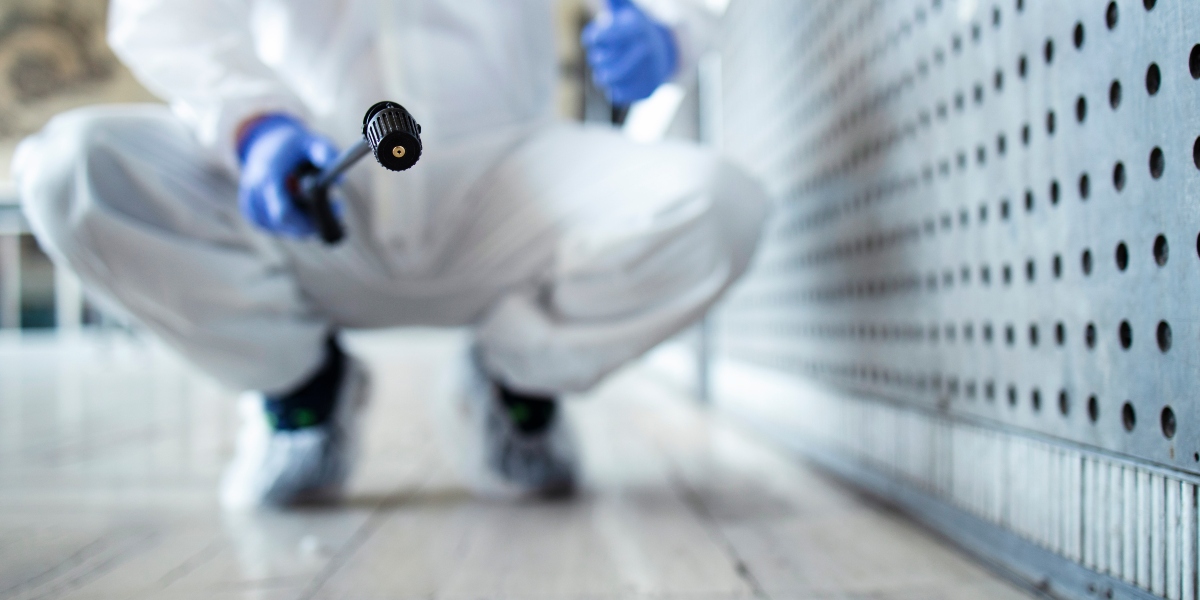
Fire Alarm Panels Essential Tips For Keeping Your Home Safe?
Fire alarm panels are an essential component of any building's fire safety system. These panels serve as the brains behind the operation, monitoring and controlling the various devices that make up a fire alarm system. From smoke detectors and heat sensors to manual pull stations and sprinkler systems, the fire alarm panel is responsible for detecting and alerting occupants to the presence of a potential fire.
By providing real-time information about the status of each device, fire alarm panels help to ensure a swift response in the event of an emergency. They can also be programmed to trigger alarms, notify emergency services, and even initiate suppression systems to help contain a fire before it spreads.
In this article, we will explore the importance of fire alarm panels in protecting lives and property, as well as the different types of panels available on the market today. Let's dive in to learn more about these critical components of fire safety systems.
A. Definition of fire alarm panels
Fire alarm panels are a vital component of any home's safety system, playing a crucial role in the event of a fire. These panels are responsible for detecting a fire and sounding the alarm to alert residents to evacuate the home. It is important to install smoke alarms on every level of the home and to test the alarm at least once a year to ensure they are functioning properly. Creating a fire escape plan and practicing it regularly with your family can help prevent fire deaths and keep your home safe. In addition to smoke alarms, it's important to have a fire extinguisher and carbon monoxide detectors installed in your home to safeguard your home in case of a fire or gas leak. Remember to keep at least 10 feet of space around the fire alarm panels so they can sound properly in the event of a fire.
B. Importance of fire alarm panels in building safety
Fire alarm panels play a vital role in ensuring the safety of buildings and the people inside them. They are essential components of a building's fire detection and alarm system, providing early warning in the event of a fire. It is important to install smoke alarms on every level of the home and to test the alarm at least once a year to ensure they are working properly. Creating a fire escape plan and practicing fire safety tips with your family is crucial for protecting your home and family in the event of a house fire. Regular fire drills and testing your smoke and carbon monoxide alarms can help prevent fire deaths and keep your home safe.
In case of a fire, having a fire extinguisher on hand and knowing safety tips like staying low to the ground and keeping at least 10 feet away from the fire can help safeguard your home and protect your family. It is also important to make sure the wiring of your home smoke alarm and fire alarm panels are up to code to prevent false alarms and ensure proper functioning in an emergency. By making your home a smart home with interconnected smoke alarms, you can increase the chances of early detection and alert the fire department sooner, potentially saving lives.
II. Types of fire alarm panels
Types of fire alarm panels are an essential part of fire safety measures in any building, especially in homes. It is crucial to have reliable fire alarm sounds to alert residents in case of a home fire. There are different types of smoke alarms that can be installed in your home, such as photoelectric smoke alarms and ionization smoke alarms. It is recommended to have smoke alarms outside each sleeping area and on every level of the home to prevent potential fire hazards. Regularly check and replace the entire smoke alarm if it is more than 10 years old. In case of an emergency, always call the fire department immediately. These safety measures can give homeowners peace of mind and ensure safety in the event of a fire.
One way to enhance fire safety in your home is to install a smoke alarm detects smoke from flaming fires before reaching critical levels. Many home security systems come with alarms in your home that are directly connected to the security system. It is important to keep smoke outside each sleeping area and always have a battery at least once a year. October is fire safety month, so take this time to review your fire safety measures and ensure all smoke alarm safety equipment is in working order. By taking the necessary precautions and being prepared, you can ensure safety and prevent potential fire hazards in your home.
A. Conventional fire alarm panels
Conventional fire alarm panels work by constantly monitoring the environment for signs of smoke or fire. When the smoke alarm detects a problem, the system will sound an alarm to alert residents to the potential danger. This prompts individuals to take necessary fire safety measures, such as evacuating the building and calling the fire department. Conventional fire alarm panels provide a level of reliable fire detection and can offer peace of mind by ensuring safety. However, they may not be as advanced as modern home security systems that can detect other types of fire related issues. Additionally, they require regular maintenance, such as replacing batteries at least once a year, and may need to be replaced entirely after a certain period of time.
There are different types of smoke alarms available, such as photoelectric smoke alarms and ionization alarms. Each type is designed to detect flaming fires or slower smoldering fires, respectively. Installing a smoke alarm outside each sleeping area and on every level of the home can help to prevent potential fire hazards. It is important to regularly test the alarms and replace the entire smoke alarm unit every 8-10 years to ensure their effectiveness. By taking these safety measures, homeowners can keep smoke from reaching dangerous levels and maintain a high level of fire safety in their homes.
B. Addressable fire alarm panels
Addressable fire alarm panels work by connecting various devices, such as smoke alarms and heat detectors, to a centralized control panel. When a smoke alarm detects smoke from a fire, the alarm sounds and the panel identifies the specific location of the alarm, providing crucial information for evacuation and emergency response. This system allows for quicker detection and response to fires, ultimately increasing fire safety measures and ensuring safety in residential and commercial buildings.
Pros of addressable fire alarm panels include their ability to pinpoint the exact location of a fire, allowing for faster response times and reducing the risk of property damage. Additionally, these panels are reliable fire safety tools that provide peace of mind to occupants. However, cons may include higher installation and maintenance costs compared to traditional fire alarm systems.
III. Components of fire alarm panels
Control panel
The control panel is the central hub of a fire alarm system. It receives signals from initiating devices and activates alarm sounds when a fire is detected. A reliable fire alarm panel is essential for ensuring safety in the event of a home fire. By installing a control panel in your home, you can have peace of mind knowing that your family is protected.
Initiating devices
Initiating devices are the components of a fire alarm system that detect smoke or heat and trigger the alarm. Two common types of smoke alarms are photoelectric smoke alarms and ionization smoke alarms. It is important to have smoke alarms installed in your home, outside each sleeping area and on every level of your house to prevent potential fire hazards. Regularly test and replace the entire smoke alarm every 10 years or when the battery at least once a year. In case a fire detector alarm detects smoke or smoke alarm safety measures should be implemented immediately to keep smoke and flaming fires from reaching other parts of the house and potentially causing more damage. In an emergency, always remember to call the fire department and use fire safety equipment to extinguish the fire.
1. Smoke detectors, Heat detectors, Notification devices, Alarms, Strobes
Smoke detectors are an essential part of ensuring safety in the home, especially during home fire safety month. There are two main types of smoke detectors: ionization smoke alarms and photoelectric smoke alarms. Ionization smoke alarms are best at detecting fast flaming fires, while photoelectric smoke alarms are better at detecting smoldering fires. It is recommended to have both types of smoke alarms in your home, ideally outside each sleeping area and on every level. It is important to keep smoke detectors in good working condition by testing them regularly and replacing the batteries at least once a year. If an alarm sounds, it is crucial to call the fire department immediately to prevent potential fire hazards.
Heat detectors are another important part of a reliable fire safety system. These detectors are designed to detect a rapid rise in temperature, indicating a fire. When used in conjunction with smoke detectors, heat detectors provide an extra layer of protection for your home. In the event of a fire, notification devices such as alarms and strobe lights can help alert everyone in the household to evacuate safely. These devices are often connected to home security systems for added peace of mind. By using a combination of smoke detectors, heat detectors, and notification devices, you can ensure that your home is equipped with the necessary fire safety measures to keep your family safe.
IV. Installation and maintenance of fire alarm panels
Installing and maintaining fire alarm panels is crucial for fire safety measures in any building. Proper installation procedures ensure that the smoke alarm safety system is functioning correctly and can alert occupants in the event of a home fire. It is important to have different types of smoke alarms installed, such as photoelectric smoke alarms and ionization alarms, to detect various types of smoke and flaming fires. Regular maintenance and testing of these alarms are necessary to ensure a reliable fire alarm system. Testing should be done monthly, and the battery at least once a year. In case the alarm sounds, it is essential to call the fire department immediately to prevent potential fire hazards and ensure safety. By ensuring safety measures are in place and adhering to fire safety measures, homeowners can have peace of mind and prevent smoke from reaching outside each sleeping area.
V. Benefits of fire alarm panels
Benefits of fire alarm panels are numerous, with the main advantage being the early detection of fires. This is crucial in preventing potential fire hazards and ensuring safety for occupants. By installing a smoke alarm outside each sleeping area and using fire safety equipment, homeowners can have peace of mind knowing that they are protected. In the event of a home fire, different types of smoke alarms can help minimize property damage by alerting residents before the fire spreads. Furthermore, reliable fire alarm panels can also ensure occupant safety by detecting various types of smoke, from flaming fires to smoldering smoke that can be harmful. When an alarm sounds, it is important to call the fire department and take necessary safety measures to keep smoke from reaching dangerous levels.
One way to ensure the effectiveness of your fire alarm system is by installing a photoelectric smoke alarm, which is designed to detect smoldering fires. It is also important to regularly check and replace the battery at least once a year to keep smoke alarms in your home functioning properly. In addition, it is recommended to replace the entire smoke alarm every 10 years to maintain optimal safety. By incorporating fire safety measures into your home security systems, you can protect your property and loved ones from potential fire dangers. During fire safety month, it is a good time to review and update your fire safety plan to ensure that all occupants are prepared in case of an emergency.
VI. Regulations and standards for fire alarm panels
When it comes to fire safety measures, regulations and standards for fire alarm panels are crucial. The National Fire Protection Association (NFPA) provides guidelines for ensuring safety in homes and buildings. Local building codes and regulations also play a role in the installation and maintenance of fire alarm systems. It is important to have reliable fire alarms in your home to provide peace of mind and home security systems. Different types of smoke alarms, such as photoelectric smoke alarms and ionization alarms, can help prevent potential fire hazards. By having smoke alarms outside each sleeping area and ensuring you keep smoke alarms alarms in your home in working order, you can be prepared in case of a home fire.
VII. Conclusion
Pronto MS has been a leading provider of fire alarm panels, offering cutting-edge technology to ensure the safety of buildings. Throughout this discussion, we have highlighted the key points regarding the importance of investing in quality fire alarm panels for building safety. The primary function of fire alarm panels is to detect any signs of fire and alert occupants, allowing for timely evacuation and minimizing potential damages. Investing in quality fire alarm panels, such as those offered by Pronto MS, ensures reliability and accuracy in detecting fires, providing peace of mind for building occupants. Additionally, quality fire alarm panels are essential for meeting building safety regulations and codes, reducing liability risks for property owners. In conclusion, prioritizing the installation of quality fire alarm panels is crucial for protecting lives and property in the event of a fire.




